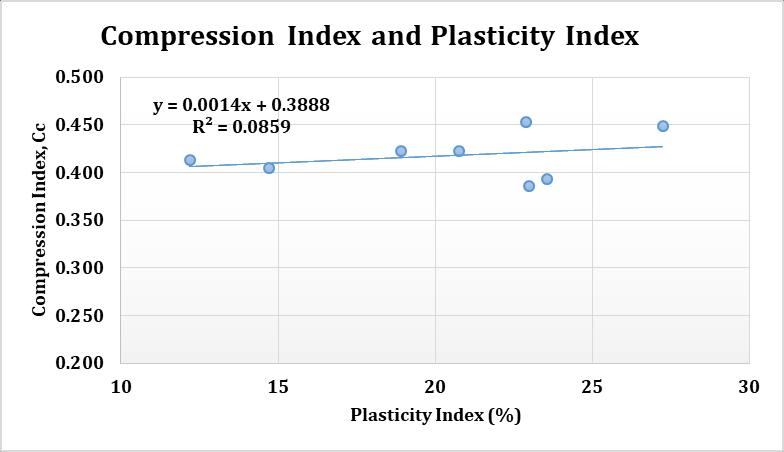
2 minute read
RESULTS AND DISCUSSION
from IRJET- Correlation of Compression Index with Index Properties of Soil Samples from Several Places in
Volume: 08 Issue: 02 | Feb 2021 www.irjet.net p-ISSN: 2395-0072
Chart 1: Compression index vs. liquid limit.
Advertisement
Chart 2: Compression index vs. plastic limit.
Chart 3: Compression index vs. plasticity index.
Chart 1 represents the graph of Cc vs. moisture content while chart 2 is the graph for Cc vs. liquid limit plot. Again in chart 3, graph has been plotted for Cc vs. plastic limit and finally in chart 4 Cc vs. plasticity index have been plotted. The results were verified using the value of R2, the goodness of fit. Among these four correlations the value of R2 for Cc vs. liquid limit shows the highest strength of association (.9137). Chart 4: Compression index vs. moisture content.
Though literature shows that the other soil parameters like moisture content, plastic limit, and plasticity index have strong correlation with the compression index, in this study it is found that for some types of soil, the relationship is not so strong. It may be due to errors in laboratory settings of the experiments or sample handling.



3. CONCLUSIONS
The relation generated in this study will help to predict the compression index ofsimilar type soil samples quickly and simply without conducting the time consuming and costly consolidation test. Thus it will bring a lot of conveniences for the engineers in this field though for larger scale project, tests should have been done properly.Again, soil properties can be influenced by any other materials present in the soil and so, soil from place to place can vary in nature. Careful decisions on soil condition should be made after proper investigation of soil.
AUTHOR CONTRIBUTIONS
Sabrin Ara(Lecturer) conducted this research and wrote the manuscript. Mohammad Salah Uddin (Graduate student) helped in data analysis and revised the manuscript. Md. Nurul Hasan Showkat (Graduate student) helped in conducting the experiments and collecting data.
REFERENCES
[1] L. D. Baver, W.H. Gardner and W.R. Gardner, Soil Physics,
Vol. 489, New York: Wiley, 1972 [2] P. Farb, Living Earth, Vol. 4, Harper, 1959 [3] D. L. Sparks, “Soils are heterogeneous mixtures of air, water, inorganic and organic solids, and microorganisms (both plant and animal in nature)”, Environmental soil chemistry. Elsevier, 2003. [4] H. Wallander, Soil: Reflections on the Basis of our
Existence, Springer, 2014 [5] I. L. Whyte, “Soil plasticity and strength--a new approach using extrusion”, Ground Engineering, vol. 15(1), 1982 [6] S. K. Haigh, P. J. Vardanega and M.D. Bolton, “The plastic limit of clays”, Géotechnique, Vol. 63(6),2013,pp. 435440.


